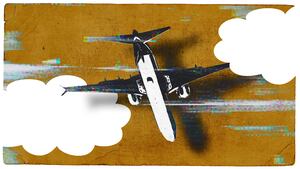Pilots flying more than 200 of the new Boeing 737 MAX-8 jets were unaware of a potentially deadly flaw in the flight controls – including the pilots of Lion Air Flight 610 that crashed in the Java Sea killing 189 people.
Aviation Week in a story by three of its most expert correspondents reveals that a system unique to the latest model 737 could, without any input from the pilots, force the jet’s nose to suddenly dip, potentially triggering a steep dive – exactly what happened in the Lion Air crash.
Responding to the report, Boeing told the Seattle Times: “We are taking every measure to fully understand all aspects of this incident, working closely with the investigation team and all the regulatory authorities involved. We are confident of the safety of the 737 MAX. Safety remains our top priority.”
The system, called Maneuvering Characteristics Augmentation System (MCAS) does not appear in the flight operations manual that pilots use to become familiar with a new model – nor, according to the Aviation Week report, was it revealed to pilots as they underwent training to convert from older model 737s, which began service in the 1960s.
MCAS is unique to the MAX versions of the 737. It is unheard of for pilots who move from one generation of a jet to another not to be alerted to any change that has critical bearing on controlling the jet.
The sequence of events that could have been responsible for the death dive of the Lion Air 737 is clearly suggested by the Aviation Week reporters.
It would have begun with an erroneous signal from a sensor intended to warn the pilots of an impending aerodynamic stall. If the sensor detects an impending increase in the wing’s angle of attack – where the leading edge of the wing tilts upward – that could lead to a stall, it automatically triggers movement of the horizontal stabilizer, which controls the plane’s pitch, to correct the movement with a forceful nose-down movement.
In a warning issued after the Lion Air crash Boeing explained that the stall-suppression sequence “can be activated without pilot input and only operates in manual, flaps-up flight.”
Those were precisely the conditions of the final minutes of the Lion Air flight when the jet had taken off from Jakarta, the flaps had been retracted, and the pilots were approaching a height of 5,000 feet in the climb, before the airplane literally fell out of the sky.
On the jet’s preceding flight another Lion Air crew had experienced control problems that, the airline said, had led to a maintenance check after which the airplane had been cleared as safe to fly.
There is no previous example of a crash caused by a flight control computer acting independently of the pilots to force a jet into a nose-down attitude. After the Lion Air crash one of the priorities of investigators would be to establish with great urgency whether a previously undetected flaw had played a role.
In this case, with the scenario outlined in the Aviation Week report, not only was a new system introduced but it was not disclosed or explained to the pilots or the airlines buying the 737 MAX-8.
Following the Boeing alert, pilots at American Airlines, which operates the MAX-8, received a message from the Allied Pilots Association, APA, that said “This is the first description you, as 737 pilots have seen [of the MCAS system]. It is not in the AA 737 Flight Manual Part 2, nor is there a description in the Boeing FCOM [Flight Crew Operations Manual]. It will be soon.”
American Airlines, the APA said, had found “no anomalies” in their MAX-8 airplanes. “That is positive news, but no assurance that the system will not fail. It is mechanical and software driven. That is why pilots are at the controls.”







